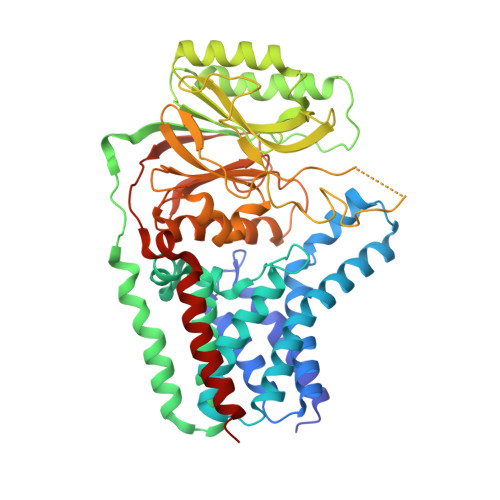Conformational changes in Apolipoprotein N-acyltransferase (Lnt).
Wiseman, B., Hogbom, M.(2020) Sci Rep 10: 639-639
- PubMed: 31959792
- DOI: https://doi.org/10.1038/s41598-020-57419-7
- Primary Citation of Related Structures:
6NWR, 6Q3A - PubMed Abstract:
Lipoproteins are important components of the cell envelope and are responsible for many essential cellular functions. They are produced by the post-translational covalent attachment of lipids that occurs via a sequential 3-step process controlled by three integral membrane enzymes. The last step of this process, unique to Gram-negative bacteria, is the N-acylation of the terminal cysteine by Apolipoprotein N-acyltransferase (Lnt) to form the final mature lipoprotein. Here we report 2 crystal forms of Lnt from Escherichia coli. In one form we observe a highly dynamic arm that is able to restrict access to the active site as well as a covalent modification to the active site cysteine consistent with the thioester acyl-intermediate. In the second form, the enzyme crystallized in an open conformation exposing the active site to the environment. In total we observe 3 unique Lnt molecules that when taken together suggest the movement of essential loops and residues are triggered by substrate binding that could control the interaction between Lnt and the incoming substrate apolipoprotein. The results provide a dynamic context for residues shown to be central for Lnt function and provide further insights into its mechanism.
- Department of Biochemistry and Biophysics, Stockholm University, Svante Arrhenius väg 16C, 10691, Stockholm, Sweden.
Organizational Affiliation:


















